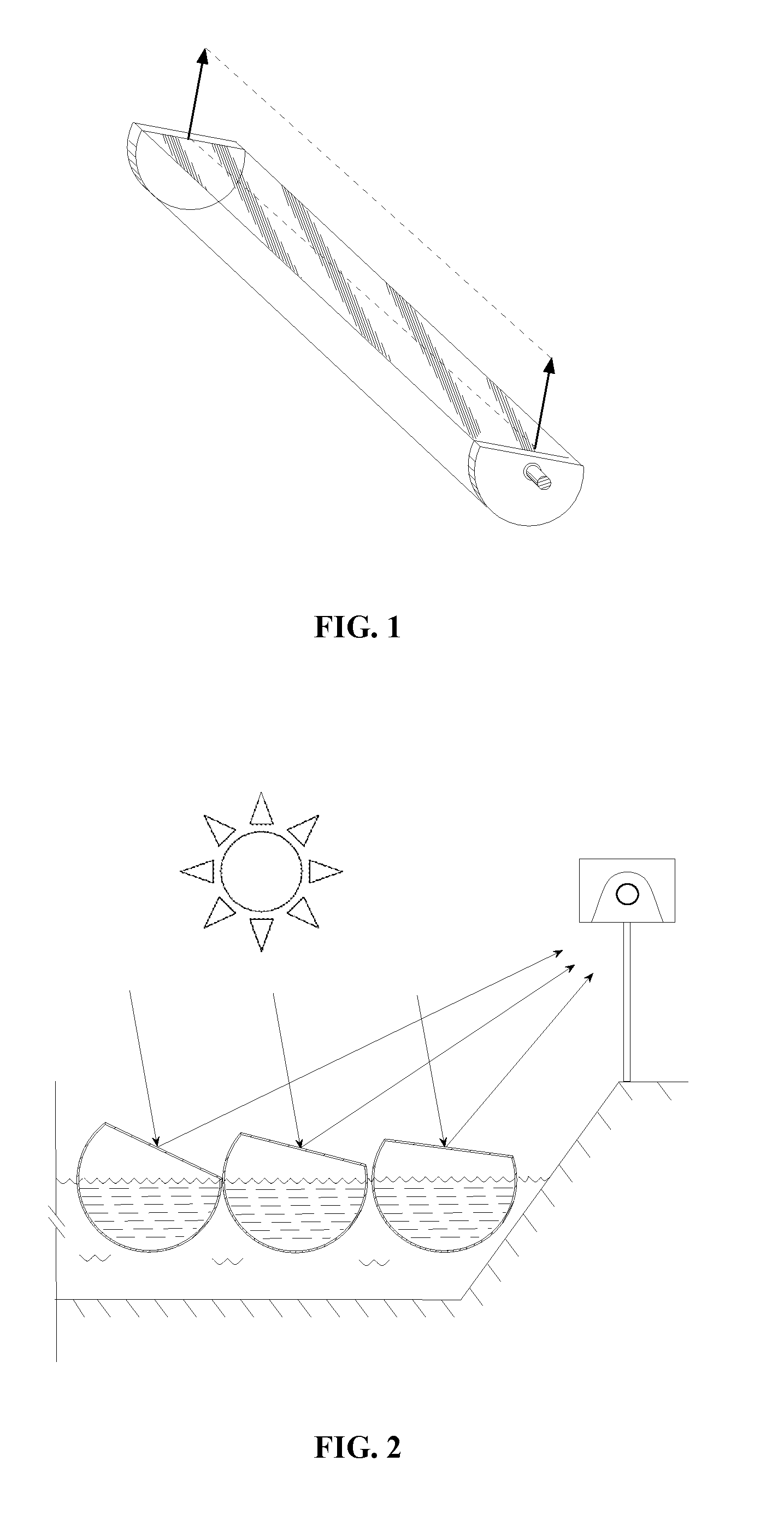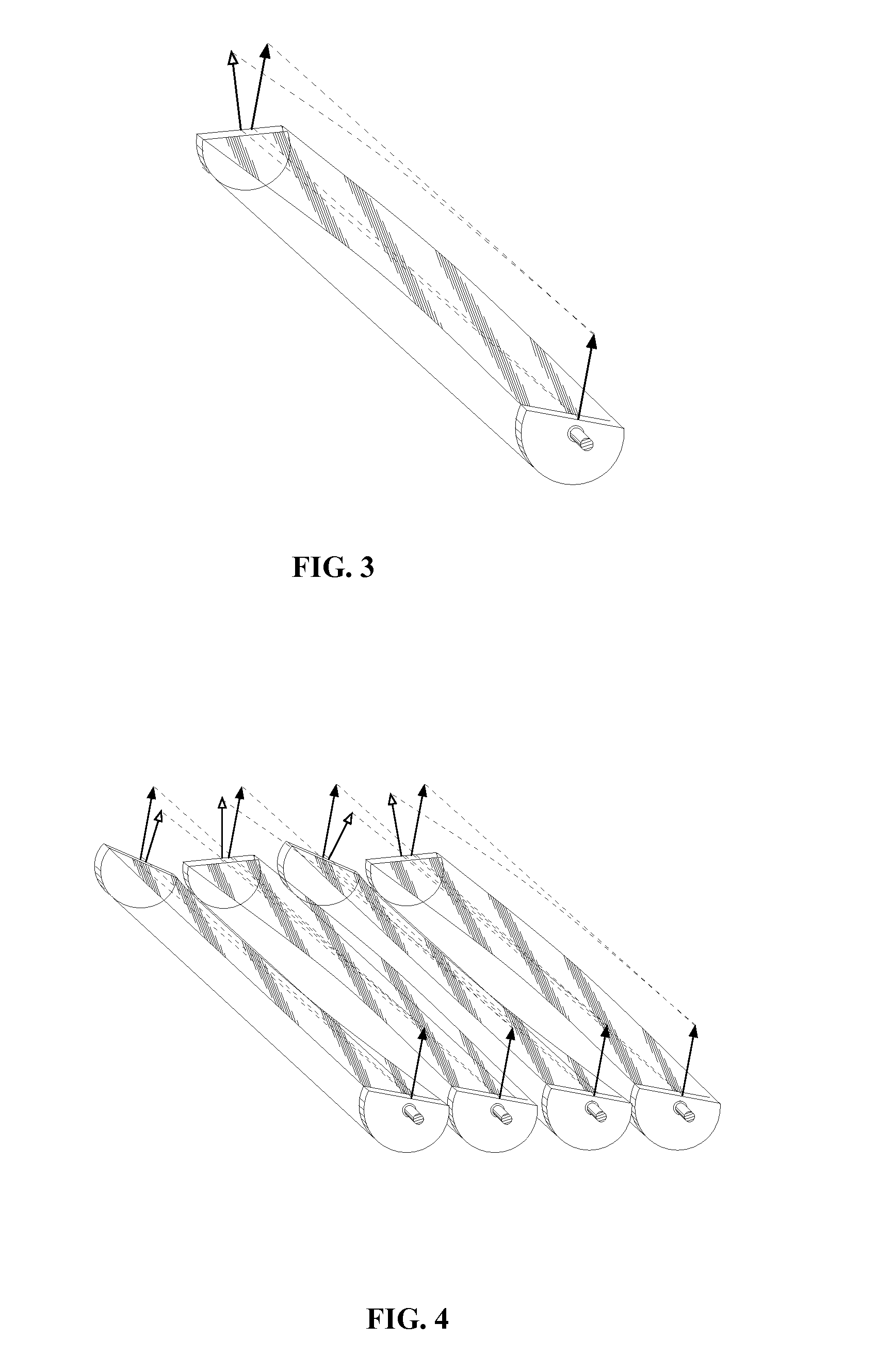Systems and methods of generating energy from solar radiation
a technology of solar radiation and solar energy, applied in solar heat systems, heat collector mounting/support, light and heating equipment, etc., can solve the problems of ineffective large-scale use of solar panels, prohibitive costs associated with such large-scale usage, and low cost of current solar panels
- Summary
- Abstract
- Description
- Claims
- Application Information
AI Technical Summary
Benefits of technology
Problems solved by technology
Method used
Image
Examples
Embodiment Construction
[0045]With reference now to the drawings, and particularly FIG. 1 there is shown a perspective view of a single tube with a flat section onto which a reflective material is attached. Arrows indicate a vector normal to the reflector plane at each end of the pipe. Such pipe may be rotated to reflect a beam of light that will hit a target as indicated by the dashed line between the arrow heads. This is an idealized view of a polymer pipe section that has been manufactured perfectly, and has no twist along its length.
[0046]With reference now to FIG. 2, there is shown a cross section of an array of solar reflector assemblies in a constructed pool. In the idealized case from FIG. 1, the beams of light reflected by the individual tube elements will strike the target uniformly, as shown in the figure.
[0047]With reference now to FIG. 3, there is shown a perspective view of a single tube with a flat section onto which a reflective material is attached. The pipe is twisted. It can be seen in t...
PUM
 Login to View More
Login to View More Abstract
Description
Claims
Application Information
 Login to View More
Login to View More - R&D
- Intellectual Property
- Life Sciences
- Materials
- Tech Scout
- Unparalleled Data Quality
- Higher Quality Content
- 60% Fewer Hallucinations
Browse by: Latest US Patents, China's latest patents, Technical Efficacy Thesaurus, Application Domain, Technology Topic, Popular Technical Reports.
© 2025 PatSnap. All rights reserved.Legal|Privacy policy|Modern Slavery Act Transparency Statement|Sitemap|About US| Contact US: help@patsnap.com



